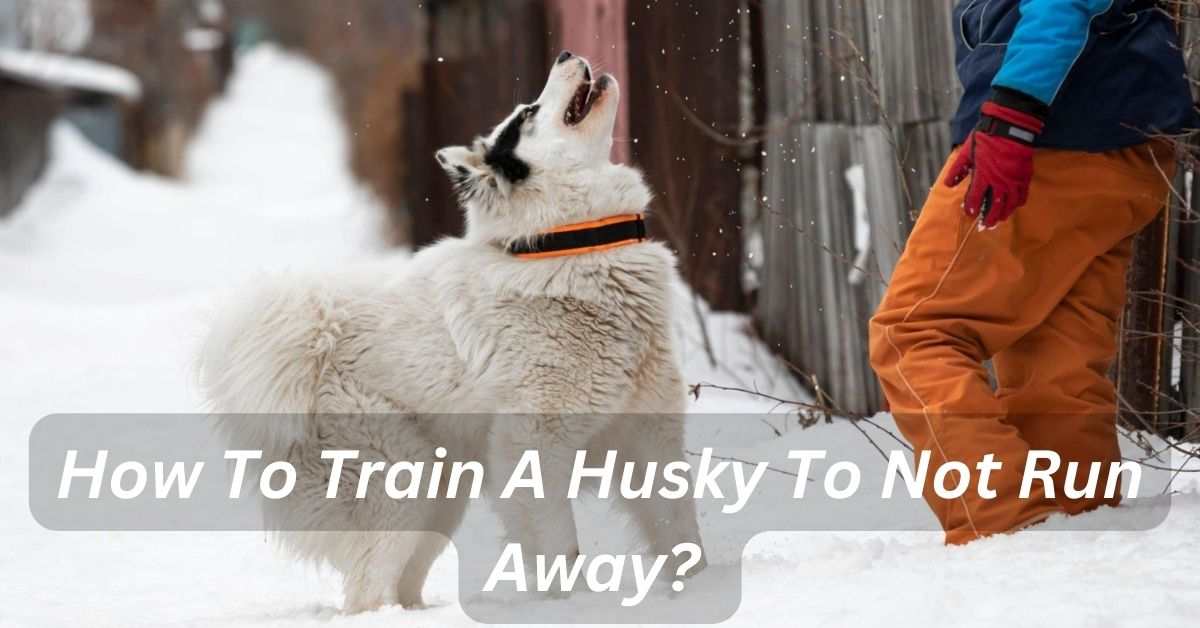Huskies are known for their striking appearance and energetic nature, but their inclination to run away can be a challenge for owners. Fortunately, with the right training techniques and a deep understanding of their instincts, you train your Husky How To Not Run Away from you.
The following guide will help you prevent your Husky from running away and ensure a strong bond between you and your furry friend.
Importance of Training: Preventing Escapes
Training your Husky is not just about obedience; it’s about safeguarding their well-being and the safety of others. An escaped Husky can face various dangers, from traffic hazards to getting lost. By instilling discipline and boundaries, you’re ensuring a secure environment for your pet.
Establishing Trust: Building a Strong Bond
Before diving into training, focus on building trust with your Husky. Spend quality time together, offer treats, and engage in gentle play. When your Husky sees you as a reliable and caring leader, they’ll be more likely to heed your commands and stay close.
Basic Commands: Teaching Recall
Teaching fundamental commands like “come” and “stay” is fundamental. Start in a quiet environment and gradually progress to more distracting settings. Reward your Husky with treats and praise when they respond correctly. Consistent practice will reinforce their understanding of these commands.
Leash Training: Walking Without Fleeing
A well-trained Husky should be comfortable on a leash. Begin by letting them wear the leash indoors to get used to the sensation. Then, move to short walks, rewarding them for walking alongside you. Over time, extend the walks while reinforcing good leash manners.
Creating Boundaries: Safe Play Areas
Designate safe areas where your Husky can play without the risk of escape. Fenced yards or enclosed spaces provide them with the freedom to roam and play while ensuring their safety. Regularly engage in play within these boundaries to strengthen their connection to the area.
Positive Reinforcement: Reward-Based Training
Huskies respond remarkably well to positive reinforcement. Whenever your Husky follows a command or stays close, reward them with treats, affection, and praise. This approach encourages them to associate good behavior with positive outcomes.
Socialization: Interaction with Others
Socialize your Husky with other dogs and people from a young age. This reduces anxiety and the urge to run away due to fear. Proper socialization also helps them understand acceptable behavior in various situations.
Curbing Wanderlust: Addressing Restlessness
Huskies are notorious for their wanderlust. Combat restlessness by providing ample physical and mental exercise. Engage in activities like jogging, playing fetch, and puzzle games to keep their minds and bodies active.
Mental Stimulation: Avoiding Boredom
Boredom can lead to escapism. Keep your Husky mentally engaged with toys that challenge their problem-solving skills. Interactive toys and treat puzzles can help prevent boredom-related attempts to flee.
Husky-Proofing: Securing Escape Routes
Thoroughly inspect your property for potential escape routes. Seal gaps in fences, reinforce gates, and ensure windows are secure. A secure environment reduces the chances of your Husky finding an opportunity to run off.

Supervision: Monitoring Activities
Supervise your Husky during outdoor activities, especially in unfamiliar environments. Until they’re reliably trained, avoid situations where they might be tempted to escape.
Technology Aids: GPS Tracking
Incorporate technology into your training plan. Consider using GPS tracking devices attached to your Husky’s collar. These devices allow you to monitor their location in real-time, providing an extra layer of security.
Conclusion
Training a Husky to stay by your side requires patience, consistency, and a deep understanding of their instincts. By following these strategies and investing time in building a strong bond, you can enjoy a fulfilling relationship with your Husky while ensuring their safety.
FAQs
Is it possible to train an older Husky to stay close?
Yes, while it might take more time and patience, older Huskies can also learn to stay close with consistent training and positive reinforcement.
How often should I engage in training sessions?
Regular short sessions are more effective than long ones. Aim for a few minutes multiple times a day.
What if my Husky tries to escape despite training?
If this happens, revisit the training techniques and identify any gaps. Consulting a professional dog trainer could also provide valuable insights.
Can I use shock collars to prevent escapes?
Shock collars are not recommended, as they can cause fear and anxiety. Positive reinforcement techniques are more effective and humane.
